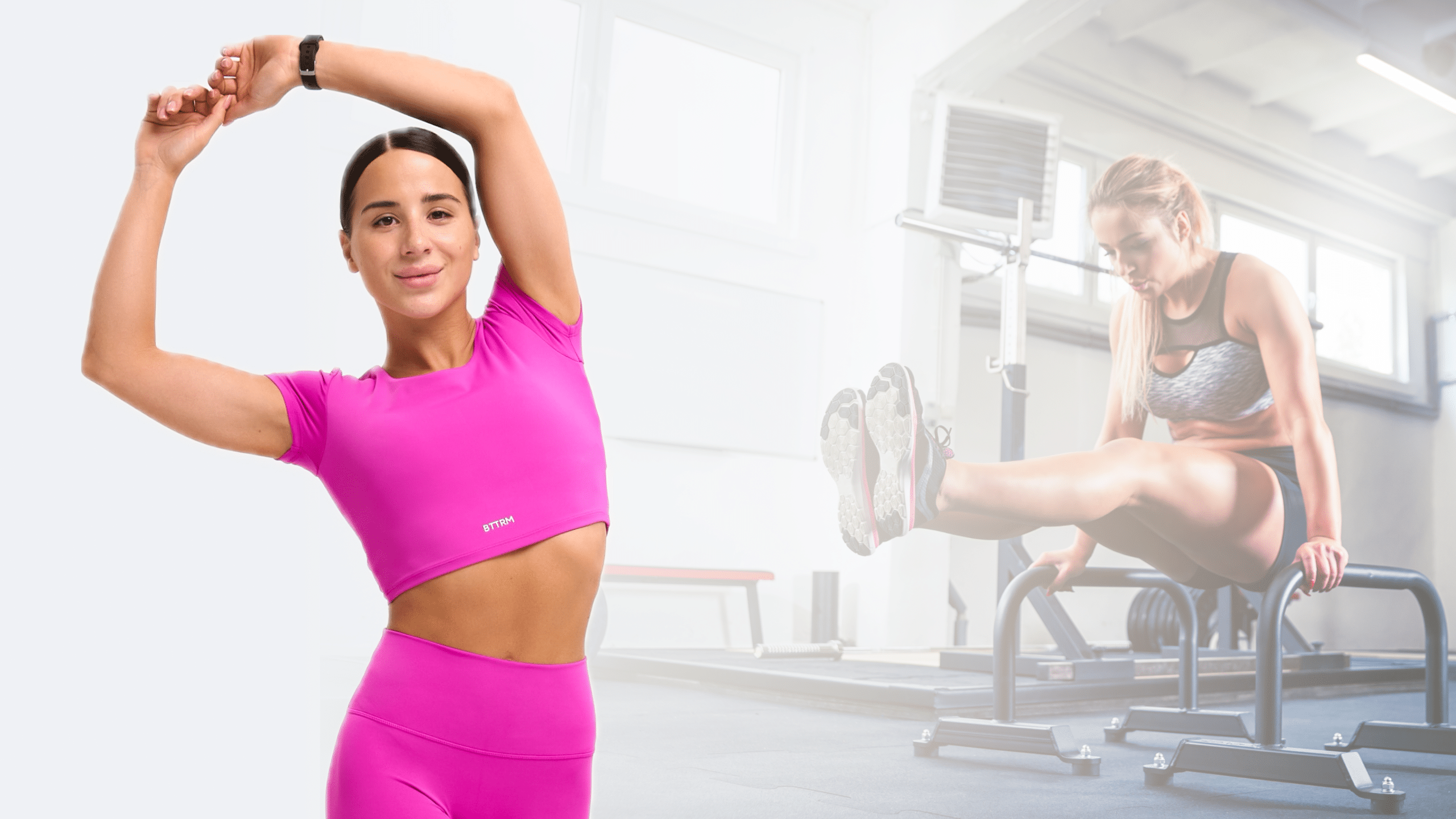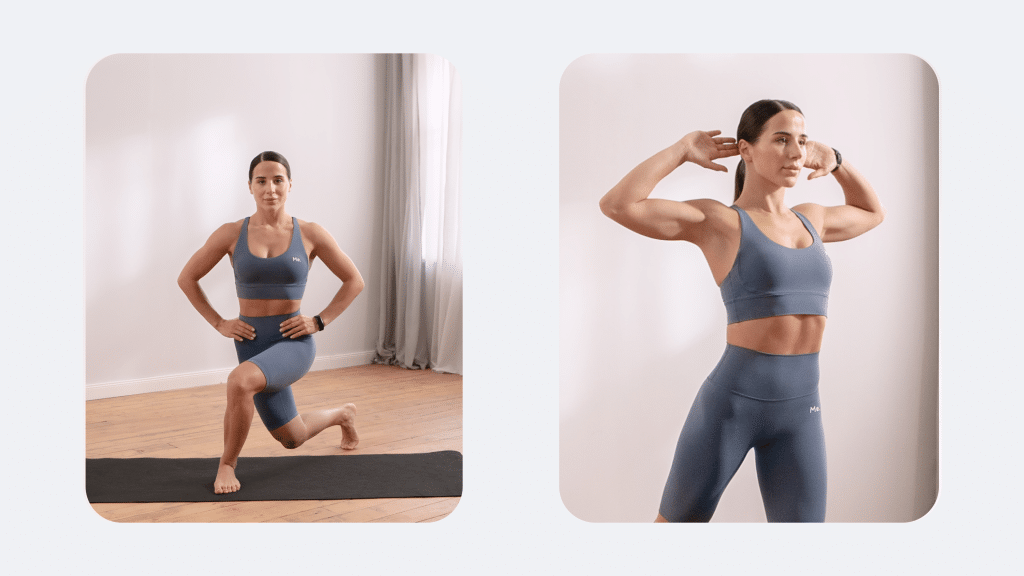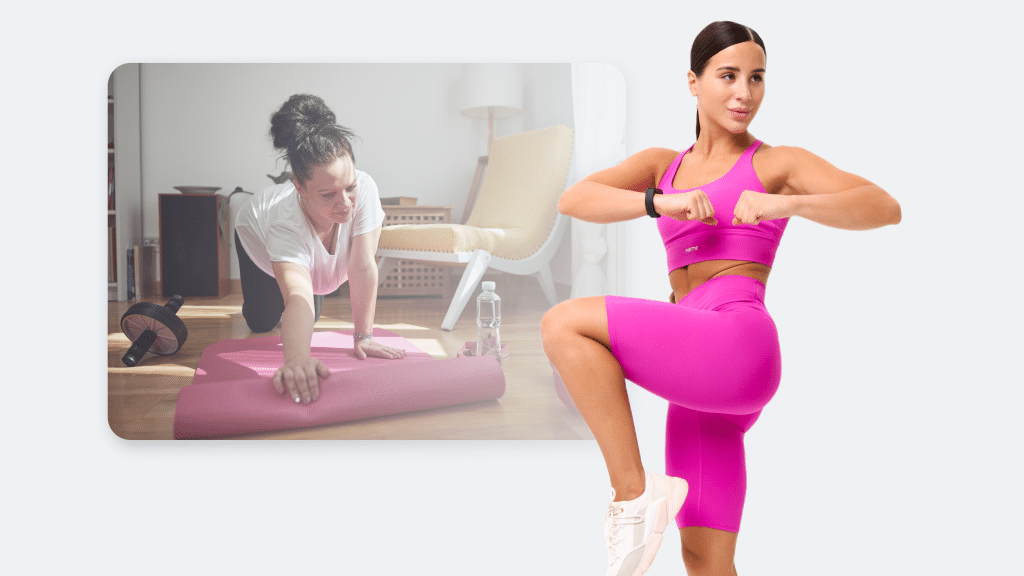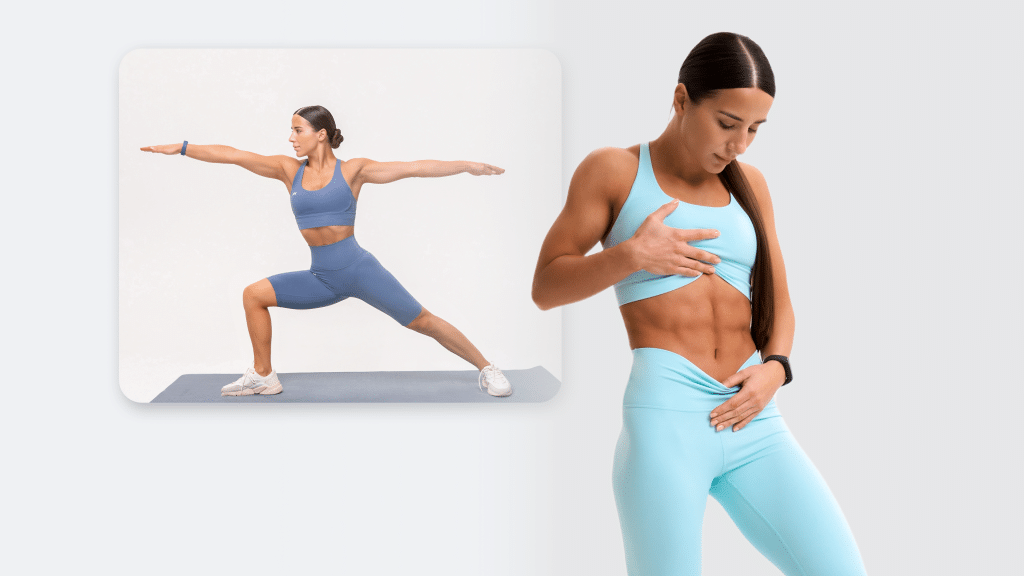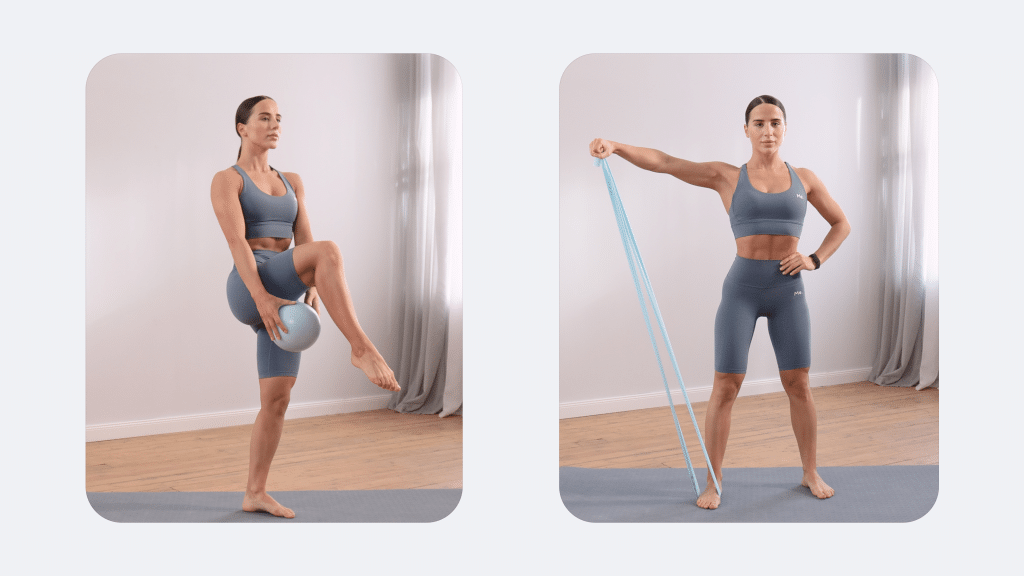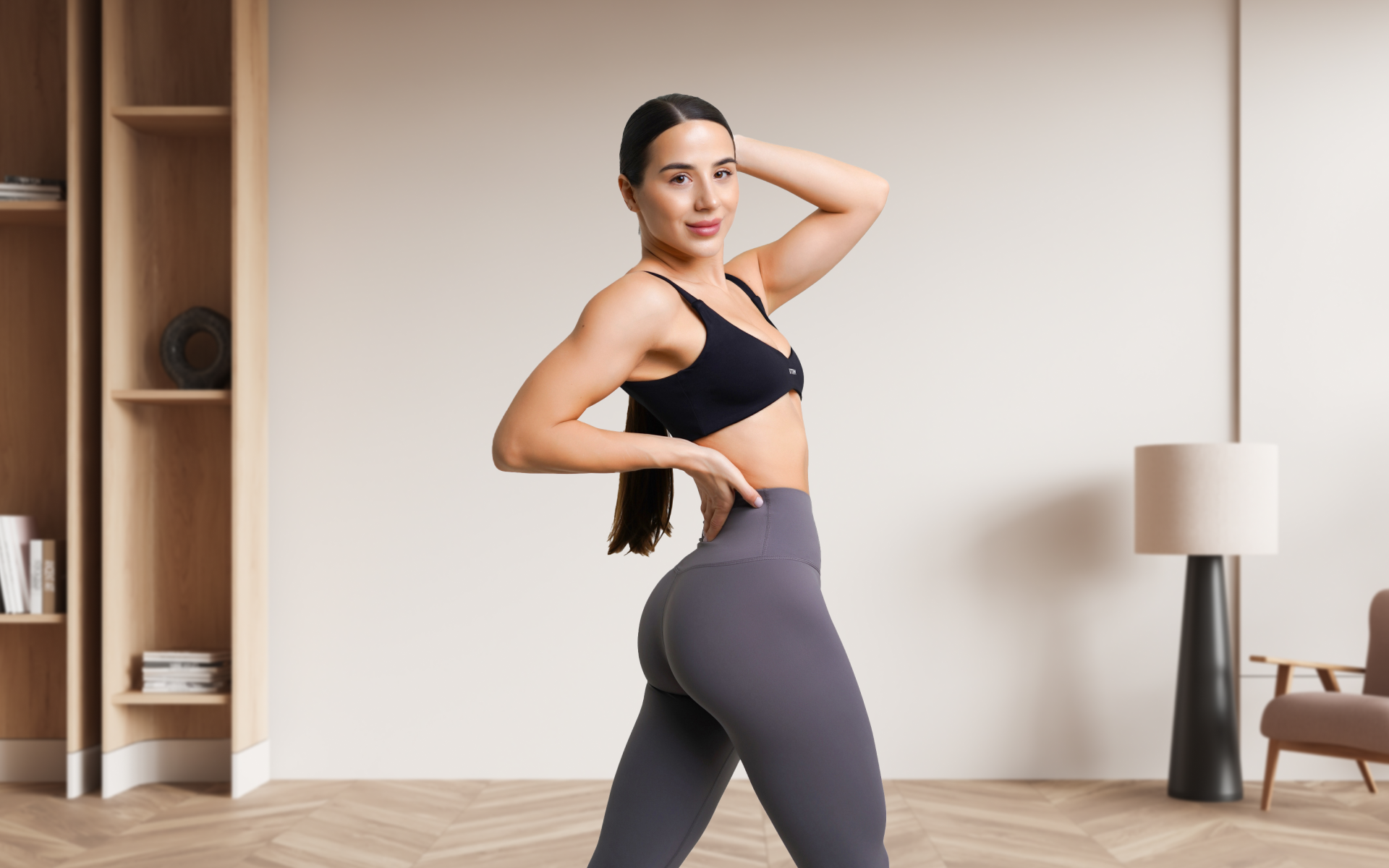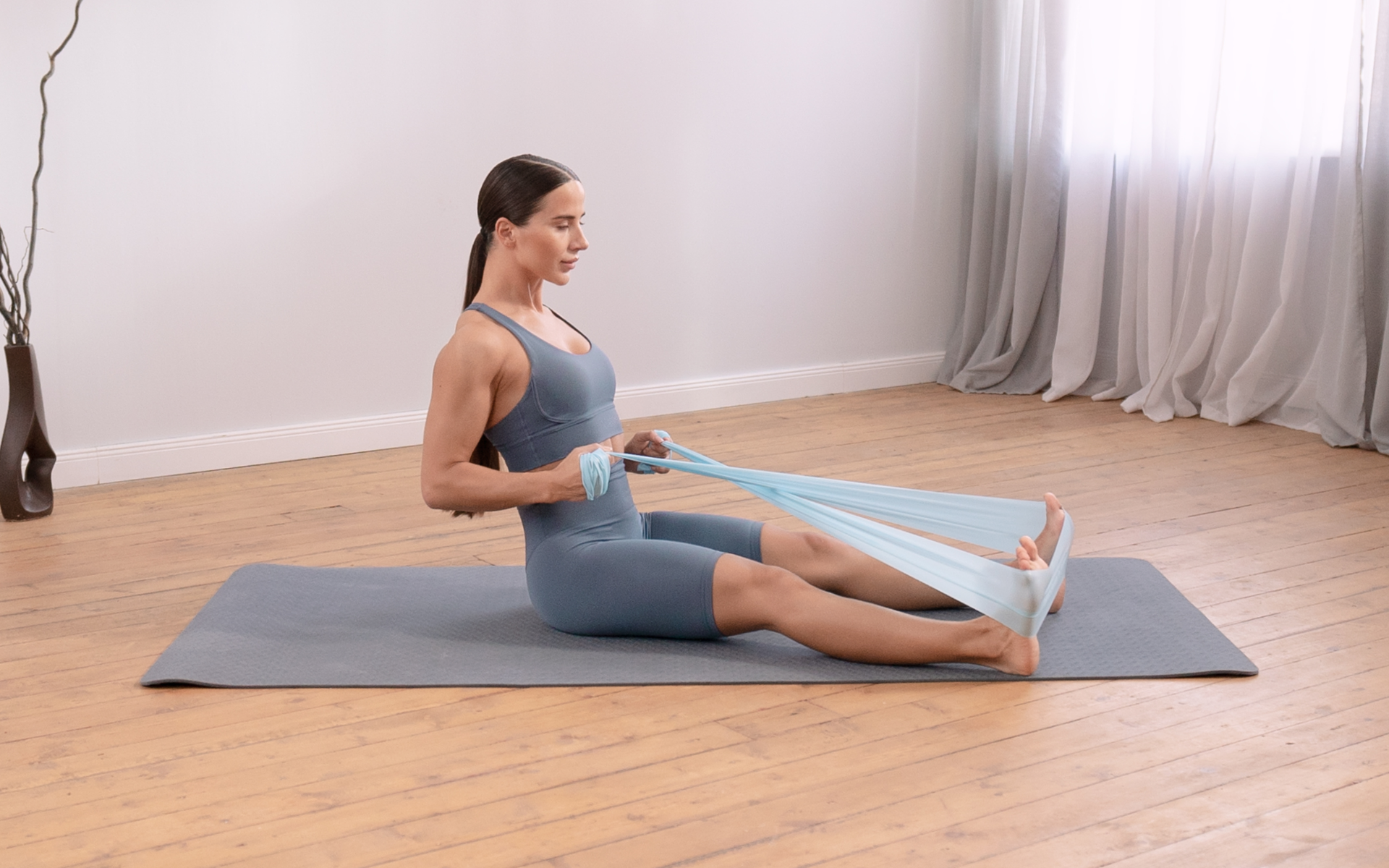Are you ready to elevate your fitness but unsure whether to choose calisthenics or HIIT workouts? You’re not alone! Many struggle to find the best decision based on their goals and needs.
Deciding between calisthenics and high-intensity interval training (HIIT) can be challenging, particularly if you don’t have anyone to guide you.
Here, we’ll explore the ins and outs of calisthenics and HIIT workouts, providing valuable insight to help you make an informed decision. By the end, you’ll have a clear understanding of which workout style aligns with your fitness goals and preferences.
What Is Calisthenics?
Definition and Basic Principles of Calisthenics
Calisthenics is a form of exercise that uses your body weight as resistance to build strength and improve flexibility. Think push-ups, pull-ups, and squats, which are simple yet effective movements that require minimal equipment. The core principle is using gravity and your body’s natural movements to work out multiple muscle groups at once.
History and Popularity of Calisthenics
The origins of calisthenics can be traced back to ancient Greece. However, some people attribute its origins to Friedrich Ludwig and Adolf Spiess, two German researchers who popularized gymnastic movements as a way to perform an effective workout.
Calisthenics gained popularity in the early 20th century as a foundational training method for military personnel. Today, it’s enjoyed by countless fitness enthusiasts thanks to social media and fitness influencers who showcase impressive changes in strength, agility, and body composition.
Calisthenics is a great option as it’s suitable for beginners and advanced trainers, and the workouts can be tailored to suit anyone’s needs.
Whether you’re looking to simply pep up your fitness routine, jazz up your diet with mouth-watering low-calorie recipes or want to get your act together and significantly drop that number on your scale – BetterMe app has got you covered! Improve your body and revamp your life with us!
What is HIIT?
Definition and Basic Principles of HIIT
High-intensity interval training (HIIT) involves short bursts of intense exercise followed by brief rest periods. The idea is to push your body to its limit during the high-intensity phases and then allow it to recover slightly before the next round. Typical HIIT workouts include exercises such as sprints, burpees, and kettlebell swings.
History and Popularity of HIIT
HIIT workouts are rooted in the athletic training programs of the 1970s, especially for running and cycling. However, due to their efficiency, they became a popular option in the 2000s.
Fitness enthusiasts and busy professionals alike are drawn to HIIT workouts as they promise to deliver maximum results in minimal time. Depending on the program, you can easily complete a highly effective workout in less than 30 minutes.
Due to the popularity of HIIT, there are now countless apps, classes, and YouTube channels dedicated to this intense workout style.
Benefits of Calisthenics
Including calisthenics in your daily routine has several benefits. Here are some of the top benefits you may experience from this exercise style.
Building Strength and Flexibility
One of the main advantages of calisthenics is its ability to build functional strength and increase flexibility (5). Exercises such as pull-ups target your upper body, while squats and lunges work your lower body.
The dynamic nature of these movements also enhances joint mobility and muscle elasticity, making everyday activities easier and more comfortable.
Accessibility and Cost-Effectiveness
Calisthenics is incredibly accessible and cost-effective. All you need is your body and some space. Unlike gym memberships or specialized equipment, calisthenics can be performed anywhere, whether you’re at home, in a park, or in a hotel room. This makes it an ideal option for those who prefer a budget-friendly approach to fitness.
Cardiovascular Health
Calisthenics is not just about building muscle, it’s also excellent for cardiovascular health (2). High-intensity routines such as burpees, jumping jacks, and mountain climbers elevate your heart rate and improve your cardiovascular endurance. Regular practice can lead to better heart health and increased stamina, which allows you to perform physical activities easier.
Improved Posture
Evidence suggests that consistently performing HIIT workouts can help improve posture (4). Many calisthenics exercises, such as bridges, lunges, and planks, can help engage core muscles, leading to better posture.
In addition, unlike other forms of exercise that focus on only one muscle group, calisthenics promotes balanced muscle development, which helps you develop a more aligned and upright posture.
Benefits of HIIT
Like calisthenics, high-intensity interval training (HIIT) offers several benefits. Here are some of the benefits of HIIT workouts.
Calorie Burning and Fat Loss
If you aim to burn calories and shed fat, HIIT could be your go-to workout. Due to its high-intensity nature, HIIT can help you burn more calories in a shorter amount of time than traditional workouts (1).
The afterburn effect, which is known as excess post-exercise oxygen consumption (EPOC), means your body continues burning calories even after you’ve finished your workouts.
Lean and toned up body isn’t just a far-fetched fantasy. Check out the BetterMe app and watch it propel your weight loss journey into high gear!
Cardiovascular Health
HIIT is also excellent for improving cardiovascular health. The intense intervals push your heart rate up, enhancing cardiovascular endurance and efficiency (3). This can lead to a lower resting heart rate and improved overall heart health over time.
Adaptable to Any Goals and Needs
Another great thing about HIIT is its versatility. If you’re new to fitness, you can start with shorter intervals of high-intensity exercise and longer rest periods. Try doing 20 seconds of workouts followed by 40 seconds of resting or doing an active rest (such as walking).
For those who are more experienced, there are plenty of ways to make HIIT workouts more challenging. You can increase the duration of the high-intensity intervals, decrease the rest periods, or add more complex movements.
The key is to keep challenging yourself to push your limit, but without any discomfort that may result in injury.
Read More: Easy Calisthenics Workout: 9 Must-Have Exercises for Your Routine
Comparing Calisthenics and HIIT
As we’ve seen, both calisthenics and HIIT workouts offer countless health benefits. But which should you choose? Let’s compare them based on their effectiveness, flexibility, adaptability, and potential risks.
Effectiveness of Different Fitness Goals
When comparing the effectiveness of calisthenics and HIIT for different fitness goals, it’s important to consider what you aim to achieve. Calisthenics excels in building strength, flexibility, and muscle tone, while HIIT is better suited for those who are looking to burn calories, lose fat, and improve cardiovascular health.
Flexibility and Adaptability
Both calisthenics and HIIT offer a high degree of flexibility and adaptability. Calisthenics allows you to progress from basic to advanced movements as your strength increases. Similarly, HIIT workouts can be adjusted by changing the duration and intensity of each interval, which makes them suitable for beginners and advanced athletes alike.
Potential Risks and Safety Precautions
While both workout styles are effective, they have potential risks. If performed incorrectly, calisthenics exercises can lead to joint and muscle strain. And due to its high-intensity nature, HIIT carries a higher risk of injury if it’s not executed with proper form and adequate rest periods.
Always prioritize safety by starting slow, using the correct technique, and listening to your body. When in doubt, speak to a health professional for guidance.
Personal Preferences
Ultimately, the best option is the one you can stick to in the long term. If you suffer doing HIIT workouts and you get excited to do your calisthenics workouts, then you should stick to calisthenics. You want to do the workouts that make you feel motivated so you can get the best results in the long term.
Practical Tips for Choosing Between Calisthenics and HIIT
When deciding between calisthenics and HIIT, ask yourself the following questions.
- What are my primary fitness goals?
- Do I enjoy longer, steady workouts or short, intense sessions?
- Am I comfortable using my body weight for resistance, or do I prefer dynamic movements?
Answering these questions will help you make an informed decision.
Assessing Your Fitness Goals
So, how are these questions going to help you decide? If your primary focus is building strength and improving flexibility, calisthenics may be a better choice. However, HIIT could be more suitable if you’re looking to burn calories and improve your cardiovascular health.
Sample Workout Plans
Here are some sample calisthenics and HIIT workouts to help you get started. Remember to make the necessary changes based on your needs and current fitness levels.
Read More: Calisthenics Training 101: Everything You Should Know to Get Started
Calisthenics Workouts
Beginner routine
- 10 push-ups
- 15 squats
- 20-second plank
Repeat 3-4 rounds.
Advanced routine
- 5 muscle-ups
- 10 pistol squats (each leg)
- 10 one-arm push-ups (each arm)
Repeat 3-4 rounds.
HIIT Workouts
Beginner routine
- 30 seconds high knees
- 30 seconds rest
- 30 seconds jumping jacks
- 30 seconds rest
Repeat 4 rounds
Advanced routine
- 40 seconds burpees
- 20 seconds rest
- 40 seconds mountain climbers
- 20 seconds rest
- 40 seconds jump rope intervals
- 20 seconds rest
Repeat 4 times
Practical Tips for Getting Started
Whether you choose calisthenics or HIIT workouts, here are some tips to help you get started.
Warm-up and Stretching
Before starting any workout routine, it’s important to warm up and stretch. A proper warm-up increases blood flow to your muscles, reducing the risk of injury. Dynamic stretches such as arm circles, leg swings, and torso twists can prepare your body for the workouts ahead.
Make sure that you also spend some time stretching to reduce the risk of injury at the end of the workout.
Focus on Proper Form
Proper form is essential in both calisthenics and HIIT workouts. It can help maximize effectiveness and prevent injuries. Start with basic exercises, paying close attention to your form. Engage your core, maintain a neutral spine, and perform movements with controlled, deliberate motions.
FAQs
How often should I do calisthenics?
For optimal results, you should aim to perform calisthenics exercises 3-5 times per week. This frequency allows adequate recovery time while ensuring consistent progress. Listen to your body and adjust accordingly to avoid overtraining.
Can HIIT help me build muscle?
Yes, HIIT can help build muscle, particularly when combined with resistance exercises, such as squats, push-ups, and kettlebell swings. The high intensity stimulates muscle growth and improves cardiovascular fitness simultaneously.
Is calisthenics suitable for beginners?
Yes, calisthenics is a beginner-friendly option as it relies on bodyweight exercises that can be easily adjusted to match your fitness levels. Start with basic movements, such as squats, push-ups, and planks. You can then gradually increase as you become stronger.
What equipment do I need for HIIT?
One of the great things about HIIT is its flexibility. You can perform a HIIT workout with minimal or no equipment. However, including equipment such as kettlebells, dumbbells, jump ropes, and resistance bands can add variety and intensity to your workouts.
The Bottom Line
Choosing between calisthenics and HIIT ultimately depends on your individual fitness goals and preferences. Both workout styles offer unique benefits and can be incredibly effective when they’re included in your routine. Don’t be afraid to try both and see which one resonates with you the most.
Remember, consistency is key. Track your progress, celebrate your achievements, and enjoy the health benefits that come with regular exercise. If you’re looking for more personalized guidance, consider consulting a fitness professional who can tailor a workout plan specifically for you.
Ready to take your fitness to the next level? Start exploring calisthenics and HIIT workouts today and discover the incredible transformations they can bring to your life.
DISCLAIMER:
This article is intended for general informational purposes only and does not serve to address individual circumstances. It is not a substitute for professional advice or help and should not be relied on for making any kind of decision-making. Any action taken as a direct or indirect result of the information in this article is entirely at your own risk and is your sole responsibility.
BetterMe, its content staff, and its medical advisors accept no responsibility for inaccuracies, errors, misstatements, inconsistencies, or omissions and specifically disclaim any liability, loss or risk, personal, professional or otherwise, which may be incurred as a consequence, directly or indirectly, of the use and/or application of any content.
You should always seek the advice of your physician or other qualified health provider with any questions you may have regarding a medical condition or your specific situation. Never disregard professional medical advice or delay seeking it because of BetterMe content. If you suspect or think you may have a medical emergency, call your doctor.
SOURCES:
- Caloric expenditure of aerobic, resistance, or combined high-intensity interval training using a hydraulic resistance system in healthy men. (pubmed, 2015)
- Energy expenditure and heart rate response to breaking up sedentary time with three different physical activity interventions. (pubmed, 2015)
- High-intensity interval training for health benefits and care of cardiac diseases – The key to an efficient exercise protocol. (pubmed, 2019)
- The effects of a calisthenics training intervention on posture, strength and body composition. (Research gate, 2017)
- The effect of four weeks’ strength and flexibility training on calisthenics beginners. (Theseus, 2022)
